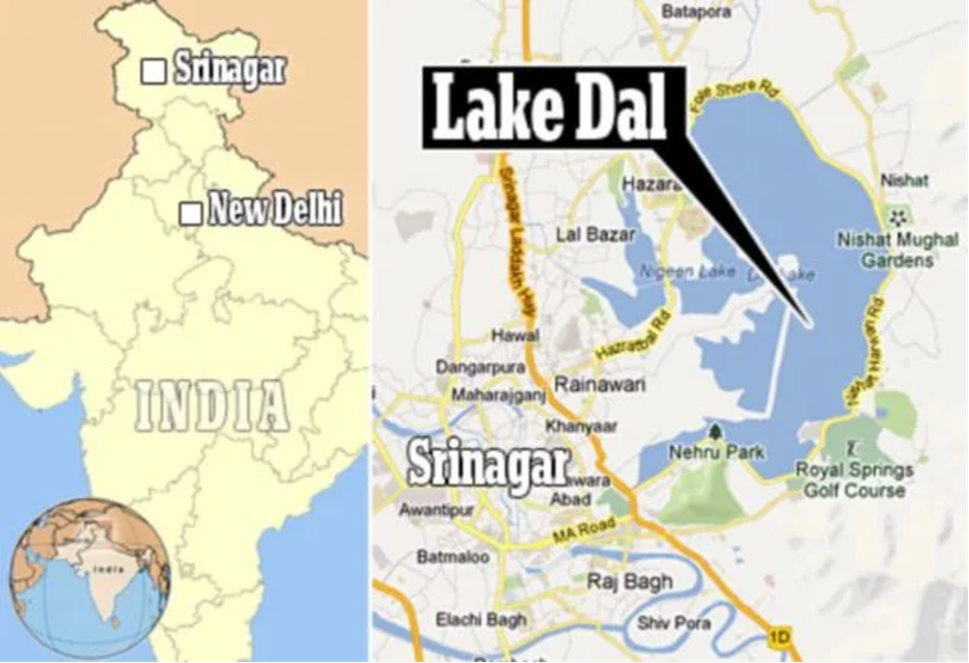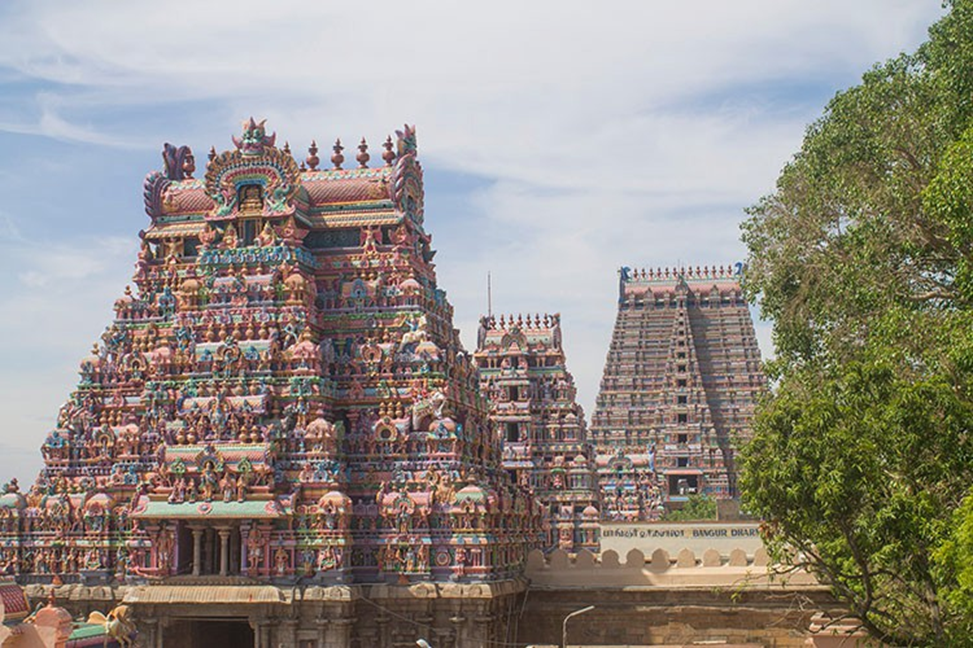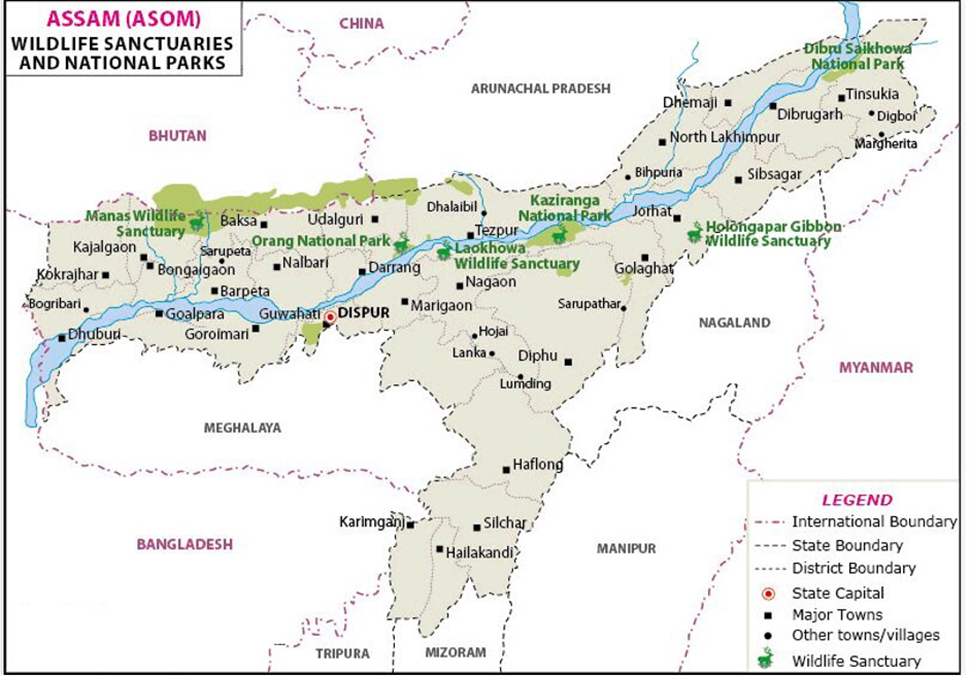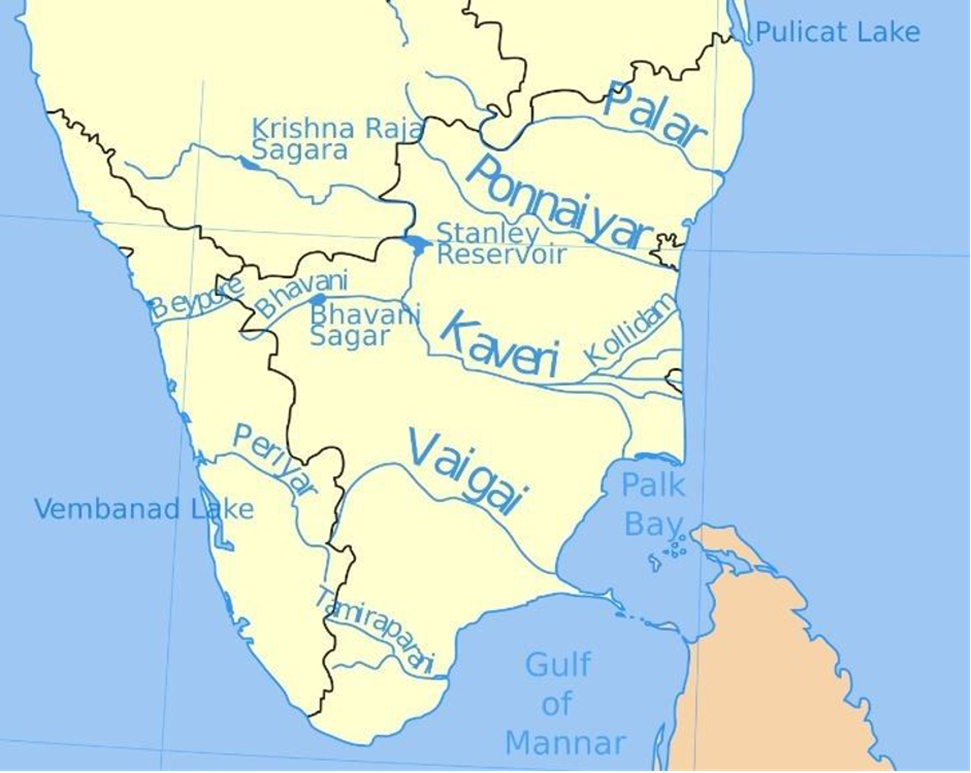- Courses
- GS Full Course 1 Year
- GS Full Course 2 Year
- GS Full Course 3 Year
- GS Full Course Till Selection
- CSAT
- 5 LAYERED ARJUNA Mentorship
- Public Administration Optional
- Online Program
- GS Recorded Course
- NCERT Batch
- Polity Module Course
- Geography Module Course
- Economy Module Course
- AMAC Module Course
- Modern India, Post Independence & World History Module Course
- Environment Module Course
- Governance Module Course
- Science & Tech. Module Course
- International Relations and Internal Security Module Course
- Disaster Management Module Course
- Ethics Module Course
- Essay Module Course
- Current Affairs Module Course
- ABOUT US
- OUR TOPPERS
- TEST SERIES
- FREE STUDY MATERIAL
- VIDEOS
- CONTACT US
PLACES IN NEWS 19th APRIL 2025
PLACES IN NEWS 19th APRIL 2025

Dal Lake
Why in news?
-
Strong winds in Srinagar overturned a tourist shikara in Dal Lake, throwing a tourist family and boatman into the water.
About Dal Lake:

- Dal Lake, located in Srinagar, Jammu and Kashmir, is one of the most prominent tourist destinations in India and is often referred to as ‘Srinagar’s Jewel.’
- It is a freshwater lake that spans approximately 22 square kilometres which is surrounded by the majestic Himalayas.
- The lake is fed by several streams, including the Jhelum River, which drains into it, playing a crucial role in maintaining its water levels and ecosystem.
- Dal Lake is renowned for its scenic beauty and floating gardens, known as ‘Rad’ in Kashmiri, where local farmers grow vegetables and flowers.
- The lake features a network of intricate canals and is home to traditional houseboats
and shikaras, which are iconic to the region.
- These shikaras, often ornately decorated, are used for recreational rides, fishing, and transportation, contributing to the local economy and tourism.
- Dal Lake has immense cultural and commercial significance, with vibrant markets like the floating vegetable market, where traders conduct business on boats.
- The lake also supports diverse flora and fauna, making it an important ecological site.
- Its picturesque surroundings, combined with its role in sustaining local livelihoods, make Dal Lake a symbol of Kashmir’s natural beauty and cultural heritage.
Sri Ranganatha Swamy Temple
Why in news?
-
Thousands gathered at Sri Ranganatha Swamy Temple in Tamil Nadu for the grand Panguni Car Festival, a centuries-old annual event celebrating devotion, tradition, and vibrant temple chariot processions.
About Sri Ranganatha Swamy Temple:

- Geography and Location:
-
- The Sri Ranganathaswamy Temple is situated at Srirangam, near Tiruchirappalli
(Trichy) in Tamil Nadu.
-
- The temple is located on an islet formed by the confluence of two rivers, the Cauvery and the Coleroon. The scenic location, surrounded by rivers, adds to the temple's spiritual significance.
- This temple is easily accessible, serving as a central religious hub for devotees and tourists alike.
- Cultural Significance:
-
- The temple is dedicated to Ranganatha, a reclining form of Lord Vishnu, and is one of the eight self-manifested shrines of Lord Vishnu, making it an important pilgrimage site.
- The temple plays a vital role in the religious and cultural life of Hindus, hosting numerous festivals, rituals, and spiritual gatherings throughout the year.
- Srirangam, known for its vibrant cultural heritage, is a hub for devotional music, dance, and Tamil religious practices.
- History:
-
- The temple's history dates back to the 2nd century BCE, with archaeological evidence of its existence from around that time. However, inscriptions detailing the temple's history are available starting from the 10th century CE.
- Throughout history, the temple has undergone numerous developments under the patronage of various dynasties, including the Cholas, Cheras, Pandiyas, Hoysalas, Vijayanagar kings, and the Nayaks of Madurai.
- The temple has remained a significant centre of devotion and has witnessed the evolution of temple architecture over centuries.
About Panguni Car Festival:
- Panguni Car Festival is a grand annual religious celebration held during the Tamil month of Panguni (March-April) at several temples in Tamil Nadu, most prominently at the Sri Ranganatha Swamy Temple in Srirangam, Tiruchirappalli.
- The festival is dedicated to Lord Ranganatha, a reclining form of Lord Vishnu, and marks the culmination of various rituals and celebrations held during the Panguni month.
- It is also closely associated with Sri Ranganayaki Thayar, the consort of Lord Ranganatha, and emphasizes divine union and celestial blessings.
- The highlight of the festival is the Rathotsavam (Car Festival), where the deities are paraded in beautifully decorated wooden chariots (rathas) pulled by thousands of devotees through the temple streets.
- The festival is steeped in tradition, with Vedic chants, musical performances, and
devotional hymns creating a vibrant and spiritual atmosphere.
- Devotees from across India and abroad gather in large numbers, seeking blessings, fulfilling vows, and participating in the divine spectacle.
Kaziranga National Park
Why in news?
-
A rare golden tiger, known for its unique fur coloration, was recently sighted in Kaziranga National Park, thrilling wildlife enthusiasts and officials.
About Kaziranga National Park:

-
Location:
-
Kaziranga National Park is located in the northeastern state of Assam, India.
-
It is the largest undisturbed area representing the Brahmaputra Valley floodplain ecosystem.
-
The park was designated a UNESCO World Heritage Site in 1985 for its unique biodiversity and conservation efforts.
-
The Brahmaputra River flows through the national park.
-
-
Flora and Fauna:
-
The park’s vegetation consists of tall elephant grasses, dense forests, rugged reeds, and marshlands, providing an ideal habitat for wildlife.
-
The wetland areas are covered with water lilies, water hyacinths, and lotus, enriching the aquatic ecosystem.
-
Kaziranga is home to many endangered and threatened species, including the Indian one-horned rhinoceros, Bengal tiger, Asiatic elephant, Eastern swamp deer, and wild buffalo.
-
Other significant species include the Hoolock gibbon, Capped langur, and Gangetic River dolphin, making it one of the most biodiverse regions in India.
-
The park harbours the largest population of one-horned rhinoceroses in the world, contributing significantly to their conservation.
-
-
Significance:
-
Kaziranga National Park plays a vital role in wildlife conservation and is a key site under Project Tiger and Project Rhino.
-
The park’s unique landscape and rich biodiversity make it a major tourist attraction and a symbol of India’s commitment to wildlife protection.
-
About Golder Tiger:
-
What it is:
-
The golden tiger, also called the “golden tabby”, is a rare color variant of theBengal tiger (Panthera tigris tigris).
-
-
It is not a separate subspecies, but a genetic variation.
-
-
Location:
-
-
Only four golden tigers are currently known to exist in the wild.
-
All of them are found in Kaziranga National Park, Assam, India.
-
-
Scientific Reason:
-
-
The colouration is caused by a mutation in the wideband gene.
-
This mutation increases production of pheomelanin, the pigment responsible for reddish-yellow hues.
-
For the golden colouration to appear, both parents must carry the mutated gene.
-
-
Impact on the Tiger:
-
-
The golden colour is harmless to the animal.
-
However, it often results from inbreeding, which may lead to genetic weaknesses or reduced fitness.
-
Vaigai River
Why in news?
a. A farmers' leader has raised concerns over the use of highly polluted Vaigai River water for 75 drinking water projects in Tamil Nadu.
About Vaigai River:

-
Origin and Path:
-
-
The Vaigai River originates from the Varusanadu Hills in the Western Ghats of
-
Tamil Nadu.
-
-
It flows southeast for approximately 258 kilometres, passing through the Theni, Dindigul, and Madurai districts before emptying into the Palk Strait near Ramanathapuram.
-
Numerous tributaries, including the Suruli and Manjalaru rivers, feed this perennial river.
-
-
Dams located:
-
-
The Vaigai Dam, located near Andipatti, is a critical structure built across the river. It supplies water for irrigation and drinking purposes to several districts.
-
Other reservoirs, like the Mullaperiyar Dam, play a crucial role in maintaining its water flow, particularly during dry seasons.
-
These dams have supported the agricultural economy in the Vaigai basin, which is known for the cultivation of crops such as paddy and sugarcane.
-
-
Reason behind high pollution level in the river:
-
-
Discharge of Untreated Sewage: Several towns and cities, especially Madurai, discharge untreated or partially treated domestic sewage directly into the river.
-
Industrial Waste Disposal: Industries along the river’s course release toxic effluents and chemical waste, increasing contamination levels.
-
Encroachments and Sand Mining: Illegal encroachments and excessive sand mining disrupt the river’s natural flow and self-cleaning ability, worsening pollution.
-
Inadequate Sewage Treatment Plants (STPs): Existing STPs are either non-functional, overloaded, or absent, leading to direct release of waste into the river.
-
Solid Waste Dumping: Households and municipal bodies often dump plastic, garbage, and other solid waste into or near the riverbanks.
-
Lack of Monitoring and Regulation: Poor enforcement of environmental regulations and lack of continuous water quality monitoring contribute to unchecked pollution over time
-
|
Also Read |
|
| Public Administration Optional | |
| UPSC Monthly Magazine | Question Answer Practice For UPSC |



